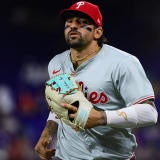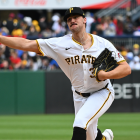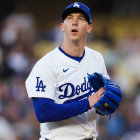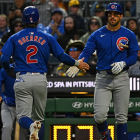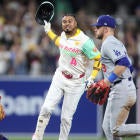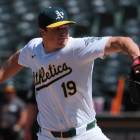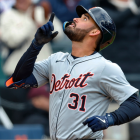Just four seasons ago, the Oakland Athletics were a 96-win powerhouse coming off back-to-back AL West titles despite a shoestring budget. They were led by Cuban sensation Yoenis Cespedes, catcher-turned-third baseman Josh Donaldson, and a small army of platoon players cast aside by other clubs.
Now, heading into 2017, the A's are coming off back-to-back 93-plus loss seasons, with little chance at excellence this coming summer. Their best player by WAR in 2016, pitcher Kendall Graveman, had a below league average 96 ERA+. Cespedes and Donaldson are both long gone. Sonny Gray is the closest thing the A's have to a franchise player right now, and he was hurt and ineffective in 2016.
Billy Beane is no longer the general manager -- he was named president of baseball operations in October 2015, with longtime assistant David Forst taking over as general manager -- but he still calls the shots, and the roster has his fingerprints all over it. Lots of power, little defense, and platoon players galore.
In many years, that strategy worked. The last two years though, it hasn't.
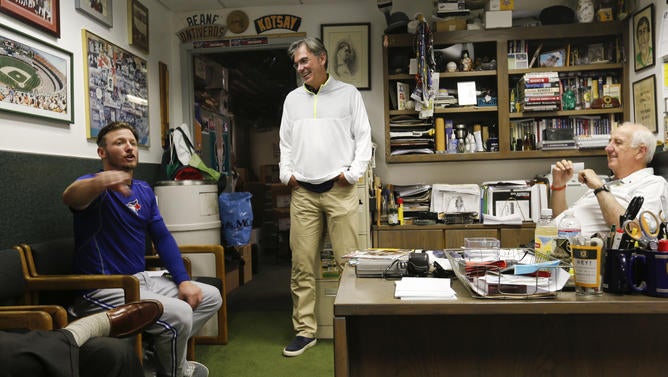
One Beane trademark is his unwillingness to throw in the towel and completely tear it down and rebuild. From 1998-2013, his first 16 years as general manager, only five times did the Athletics finish at .500 or worse, and never once did they lose fewer than 74 games. Ten times they won at least 87 games. Beane's teams were mostly competitive, rarely bad, and never awful.
Until the last two seasons. From 2015-16, only the rebuilding Reds (132), Phillies (134), and Braves (135) won fewer games that the Athletics (137), who are not rebuilding. Instead, the A's have been fairly active this offseason, signing multiple free agents to address roster needs:
- Santiago Casilla: Two years, $11 million.
- Matt Joyce: Two years, $11 million.
- Trevor Plouffe: One year, $5.25 million.
- Rajai Davis: One year, $6 million.
Generally speaking, short-term one- and two-year contracts do little long-term damage. Every team needs to field a 25-man roster for 162 games each season, and there aren't always internal options available. So, yes, sometimes even rebuilding teams need to dip into free agency for help.
The issue with Oakland's offseason is not necessarily the signing themselves, but the domino effect on the rest of the roster. Davis takes over in the outfield for Brett Eibner, who was designated for assignment when Casilla's contract became official. Plouffe will assume third base duty, forcing Ryon Healy to designated hitter.
The veteran free agents are replacing younger players. Davis is 36. Eibner just turned 28 and is coming off a season in which he hit .289/.394/.528 with 12 homers in 54 Triple-A games. Who deserves the playing time this year? Healy hit .305/.337/.524 (135 OPS+) with 13 homers and, depending on your metric, passable defense at third base as a rookie in 2016. Now he'll be the DH while the inferior Plouffe mans third.
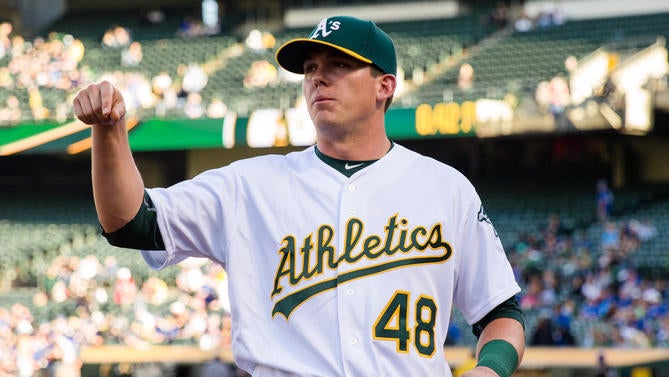
It's one thing for a bad team to sign a veteran player to plug a roster hole. That's necessary a lot of times. It's another thing for a bad team -- FanGraphs projects the A's as a 78-win team at the moment -- to cast aside younger players in favor of those veterans. Healy should be given every opportunity to show he can handle third. Eibner should get whatever at-bats end up going to Davis.
The A's are where they are for a few reasons, none bigger than the disastrous Donaldson trade. I can empathize with trading Addison Russell for Jeff Samardzija when you're in a pennant race like the 2014 A's. It didn't work out, but I get it. The Donaldson trade made no sense though. Didn't at the time and still doesn't. Hard to believe that's the best offer they could find.
Whiffing on three straight first-round draft picks from 2008-10 (Jemile Weeks, Grant Green, Michael Choice, all top-13 selections) hasn't helped matters, and now Oakland is opting for veterans over younger players. Too many teams these days are willing to sacrifice the present for the future, so I appreciate a team trying to put the best roster on the field, but sometimes that rebuild is necessary, and the A's are at that point.
To be fair, during the second half last season the A's did reduce the playing time of several veterans, most notably Coco Crisp and Danny Valencia. The team also swallowed a bunch of money to release the unproductive Billy Butler. That was a step in the right direction. Those moves opening playing time for guys like Healy and Eibner. The team has since reversed course, however.
Under Beane, the Athletics have always marched to the beat of their own drum because they've had to. Moneyball was never about on-base percentage. It was about finding value in places other teams didn't see it, and no one did it better than Beane during the early-to-mid-2000s. Those market inefficiencies are harder to find now, and that's another reason the A's are where they are.
This the lowest point for the Athletics franchise since the mid-1990s, before Beane took over. Rather than take a step back and rebuild for the first time in two decades, the team is still trying to piece together a patchwork roster, and it's difficult to see how any of the club's decisions this offseason have improved their long-term outlook.










